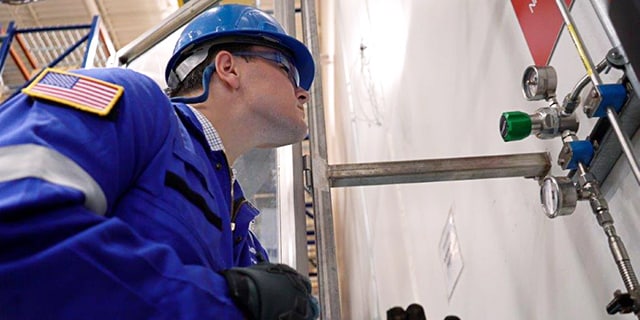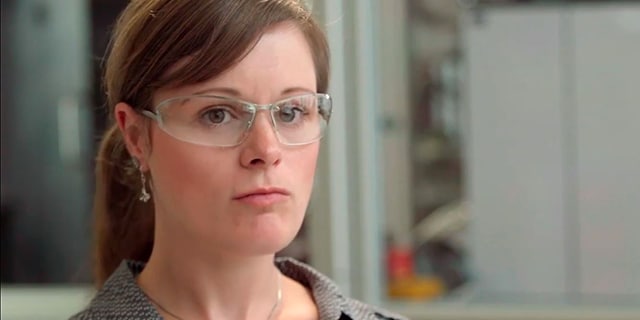Improving Lab Safety and Productivity

Why Proper Gas Distribution Is Essential for Optimized Laboratory Operations
Wouter Pronk, senior field engineer, Swagelok
Imagine yourself as a laboratory technician. As you perform your intended testing or analysis, you approach a point of use for a particular gas. You activate a mechanism to obtain the gas you need—but flow and pressure are lower than they are supposed to be.
This is a problem, potentially for multiple reasons:
- The accuracy of the test you are performing can't necessarily be relied upon, and you may not be able to move forward with it at all
- Troubleshooting to find the source of the problem will take time and money, and it's hard to say how much
- If a leak is causing these flow issues, there could also be a related safety issue, making this a top priority to fix
No matter where your lab is located—within a research facility, a chemical refinery, or some other industrial plant—these rippling consequences can have a significant impact on local operations. They also showcase the importance of maintaining consistent and reliable gas delivery to critical points of use.
Laboratory staff and management have numerous important priorities on a given day, and gas distribution may seldom be at the top of the list. However, a well-designed gas distribution system can play a major role in the ongoing consistency, accuracy, productivity, and safety needed in any lab environment. Here are a few reasons why:
All Gases Pose a Potential Risk
Certain gases carry more risk potential than others. Poisonous or noxious gases—ammonia, sulfur dioxide, and hydrogen chloride for examples—pose an immediate risk to laboratory safety in the event of a leak. Direct exposure to any of these gases is highly dangerous and should clearly be avoided.
It is important to remember, though, that all gases have the potential to create a safety risk if they escape your distribution system. Oxygen or hydrogen, for example, can become highly combustible if enough of it enters your lab or plant atmosphere. Nitrogen escaping from a system can displace atmospheric oxygen levels, creating a potentially hazardous environment in a closed space. Heavier gases like propane and butane can drop into and collect within lower-level cavities and enclosures, creating explosion risks.
Because gases like oxygen, hydrogen, and nitrogen are not always treated with the same levels of caution as noxious gases, it is possible for a lab to be experiencing small leaks without operators even realizing they are occurring. This poses a safety hazard, first and foremost. But escaping gas is also wasted gas and can come at a significant monetary cost.
How do you ensure all gases are treated with the appropriate level of caution in your facility? A professional evaluation is an effective way to identify unknown leaks, as well as to uncover distribution system design strategies that can help maximize safety.
 Pressure and Flow: Critical for Your Productivity
Pressure and Flow: Critical for Your Productivity
While not always indicative of a safety hazard, improper laboratory gas pressure and flow levels can impact your ability to perform lab tasks as efficiently and accurately as possible. For example, lower levels of pressure and flow may limit the number of tests you are able to complete in a given timeframe. They may also compromise the functionality of your testing equipment.
Often, suboptimal pressure and flow levels are rooted in system design inefficiencies. One classic example is system overdesign, where an excessive number of valves or regulators are included to throttle pressure as it travels from the source to the point of use. Sound gas distribution system design incorporates as few valves and regulators as are necessary to meet user demands at the point of use. Remember that “more” does not equate to “better” in all cases.
In the case of overdesign, it is also common for the cost of extra valves or regulators to be offset by selecting smaller gas transfer lines. A combination of extra valves and smaller lines can severely limit the maximum available pressure and flow at the point of use—thereby limiting testing productivity in the lab. In addition, selecting smaller lines upfront will limit the maximum flow of the system, potentially causing problems if your needs change.
Once again, a professional evaluation can be beneficial here. Gas distribution specialists can help identify areas for design improvement, helping you achieve your desired point-of-use requirements without artificially limiting pressure and flow if you need higher levels in the future.
Interested in learning more about how to enhance your system or how a professional evaluation can bring benefits to your laboratory? Get in touch with our gas distribution specialists to discuss your challenges and to gain insights on how to build reliable gas delivery systems.
Related Articles

Cut Maintenance Costs with Enhanced Gas Panels
Learn how easy-to-use gas panels and an overall more efficient gas distribution and delivery system can help laboratories, refineries, and other facilities drive down maintenance costs.

Improve Gas Distribution Safety and Efficiency
Gas distribution systems are crucial for helping labs, test centers, and industrial facilities operate at peak efficiency. Learn more about optimizing gas delivery system health and safety, reducing costs, and equipping your team for success.

Speeding the Production of Catalyst Testing Systems for Integrated Lab Solutions
Learn how Swagelok’s solutions-driven associates and quality fluid system components helped speed the production of catalyst testing systems for Integrated Lab Solutions, a Berlin-based manufacturer of automated testing equipment.

